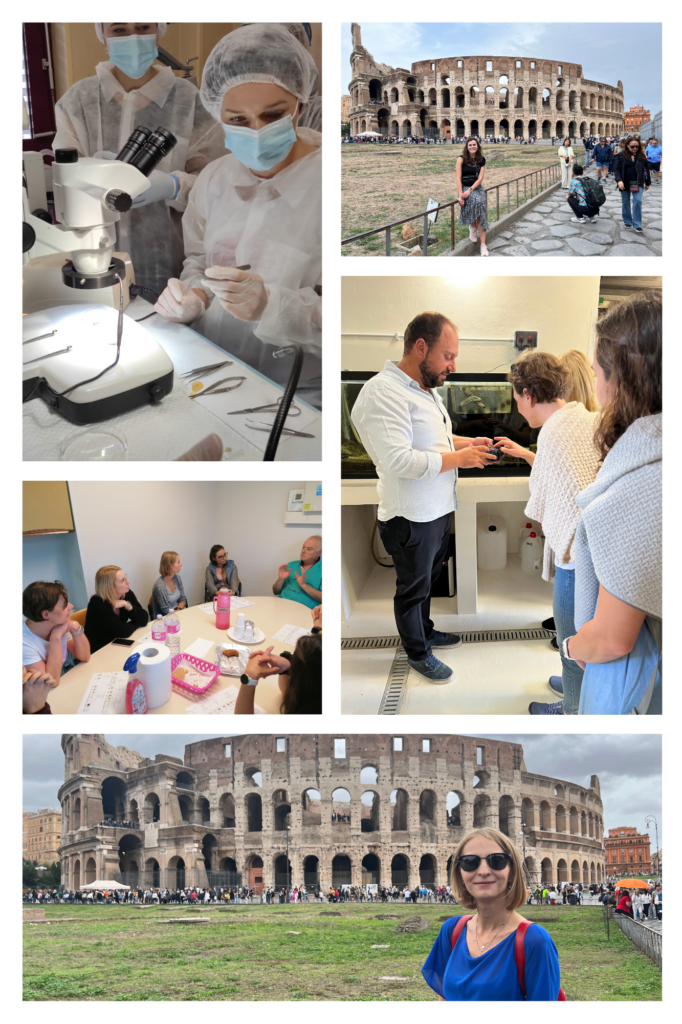Between October 16 and 26, Alicja Dziadosz and Katarzyna Dziubek took participated in a two-week course in animal studies, specifically focusing on patient-derived xenografting in mice. The training was organised by Dr Marina Potesta and Dr Carla Montesano as part of CANVAS project and took place in Italy at The University of Rome Tor Vergata, which is our strategic partner in the CANVAS project. The training included both theoretical and practical aspects of work with animals.
The course focused on techniques to develop patient-derived xenografts in mice, particularly the subcapsular transplantation of tissue in the kidney. Due to differences in attendees’ levels of advancement with animal work, the course started with basic animal handling techniques. Subsequently, the participants practiced various drug administration methods, including subcutaneous, intramuscular and intraperitoneal routes. Later, they proceeded to learning surgical suturing methods. Before practicing the surgical procedure, the participants were instructed on how to properly perform anaesthesia and how to approach postoperative care. During several days of practicing the renal subcapsular implantation, the participants first performed the procedure on several dead animals, learning how to prepare the animal for surgery, how to make an incision to expose the kidney, then perform the implantation and close the abdomen. In the final step, the procedure was performed on live animals with the guidance of experts in this type of animal work.
Interestingly, Alicja and Katarzyna also had a chance to meet with researchers working on the development of a hormonal vaccine to regulate the population of wild boar in Italy as a safe alternative to currently available methods. The training has been organised in the frame of activities planned in WP2: Sharing scientific expertise for innovative R&I approaches (Task 2.1. Twinning visits with UNITOV).

Photos by A.Dziadosz and K.Dziubek
“Having no prior experience in animal work, we first learned basic animal handling and injection methods. Later, we were instructed on how to properly perform anaesthesia and approach the animal postoperative care. Finally, we proceeded to more advanced training on tumour transplantation in mice using various methods, depending on the study design and type of tumour investigated. Interestingly, in case of NSCLC tissue, the implantation success may vary between 23% and 90% depending on the method chosen for transplantation, making it a key factor for experimental outcomes,” said Katarzyna.
“Murine models are extremely valuable for the advancement of cancer studies and allow for much better similarity to the human body conditions than any other in vitro model. However, each animal study should be performed with great care to minimize animal discomfort. Moreover, having no previous experience with animal work, I realized that working with a living, moving organism is a very difficult job, also in emotional terms. This course and the people working there made me realize how important it is to put the welfare of animals first” – added Alicja.
